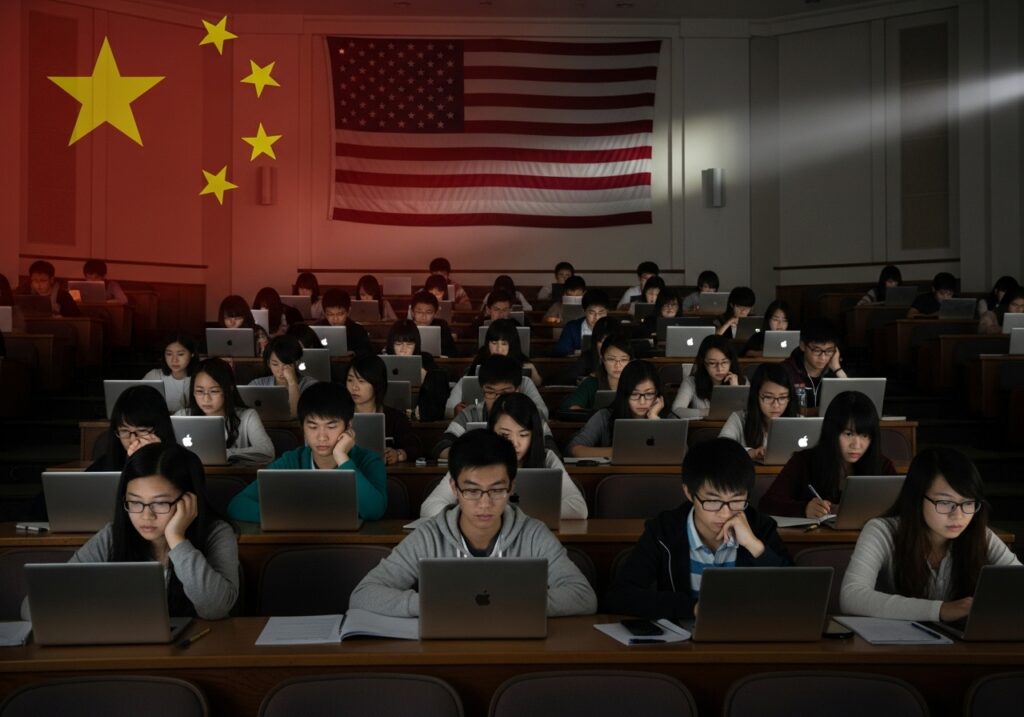President Trump’s recent announcement to guarantee 600,000 visa spots for Chinese college students has raised serious questions among national security experts and America First supporters. While some of his closest allies hoped for a harder stance toward Beijing, the President’s decision signals that his core approach — focused on economic leverage and deal-making — remains unchanged.
Trump’s words were clear. “It’s a very important relationship,” he said about U.S.-China ties. “We’re going to allow their students to come in; it’s very important.” That comment alone is enough to cause concern for those who understand the broader threat China poses to the United States.
Right now, there are already an estimated 270,000 Chinese students studying in the U.S. These students are not just ordinary college kids. Almost all of them get approval from the Chinese Communist Party (CCP) before stepping foot on American soil. Many face pressure to report back to Beijing or are watched by Chinese consulates here in the U.S. Some even become tools of the CCP’s global influence — gathering sensitive research, shaping university policies, and promoting Chinese state narratives.
Secretary of State Marco Rubio has warned about this before. Earlier this year, he promised to “aggressively review” Chinese student visas, recognizing the risks they pose to national security and academic freedom. Other senior figures in the Trump administration, like Vice President JD Vance and Trade Adviser Peter Navarro, have also called for stronger measures to push back against the Chinese regime.
So why this move now?
The answer lies in Trump’s long-standing view of foreign policy. From the 1980s to today, Trump has said the same thing: America is being ripped off. Whether it’s China, NATO, or wealthy allies like Japan and Saudi Arabia, his focus has always been on getting a better deal for U.S. taxpayers. That mindset hasn’t changed.
Trump doesn’t see China as an enemy to be cut off entirely. He sees it as a rival that must be pressured into respect — by tariffs, trade policies, and tough negotiations. In that view, admitting more students might serve a purpose in a broader economic play. But that calculation may not factor in the full cost.
Because China isn’t just another trade competitor. It’s a hostile regime with a long record of stealing American technology, spying on our universities and companies, manipulating our markets, and poisoning our culture with surveillance apps and propaganda. The CCP uses every tool available — from Confucius Institutes to cyberattacks — to gain an advantage over the United States.
By opening the door wider to Chinese nationals in American institutions, we risk giving that regime even more access to our research, our youth, and our economic foundations. And as Secretary of Commerce Howard Lutnick recently noted, many U.S. universities have become financially addicted to full-tuition-paying Chinese students. That dependency drives up tuition for American families and creates pressure to stay quiet about China’s abuses.
What America needs is not a deeper partnership with Beijing, but a careful and strategic disengagement. That doesn’t mean cutting off all trade or diplomacy. But it does mean protecting our critical institutions — our schools, our laboratories, and our markets — from a regime that openly seeks to surpass and undermine us.
The President’s supporters are right to be concerned. While Trump continues to fight for better deals, the nature of the Chinese threat demands more than business-style negotiation. It demands clear lines, firm boundaries, and a willingness to say no — even when there’s money on the table.
We can hope these visa guarantees are part of a broader strategy to pressure China on trade. But we must also be realistic. No economic gain is worth risking our national security, our technological edge, or our children’s future. It’s time to think beyond the deal — and start thinking like a country under threat.
Because we are.

